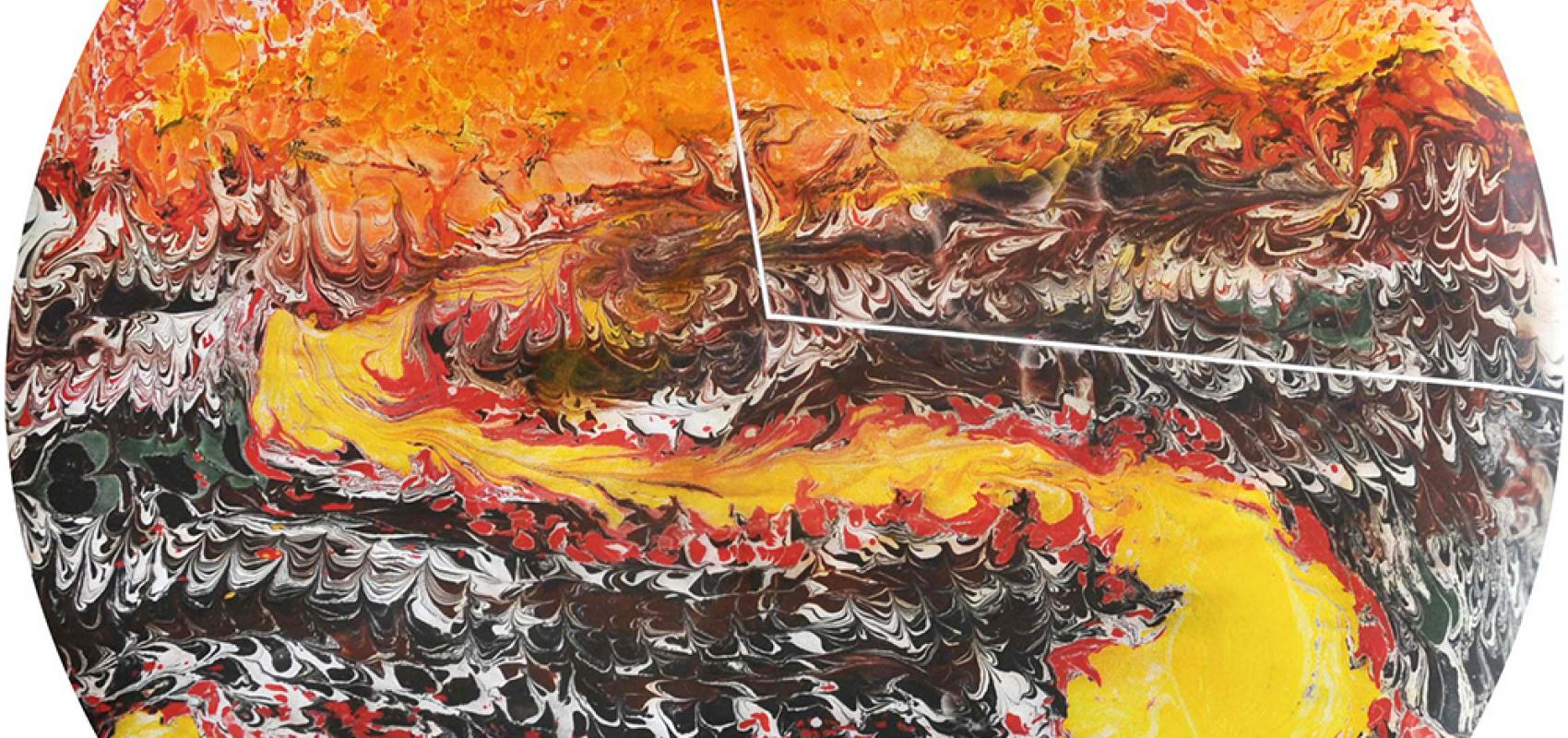In the work of Rafael Villares, nature and its relationship with man occupies a primordial place. This binomial always finds the ideal forms of expression in the art of the young creator. We know that chance does not exist and let's say then that, in the pictorial path of the sculptor, the artistic experiences necessary to show the primordial roots that define us and their impact on the psyche of man arrive.
During a residency at the Vermont Studio Center (United States), Villares materialized the idea of the Hydronymic Drawings Series. There, so close to nature and surrounded by various art professionals such as poets, writers, painters and essayists from different countries, the inspiration was born to create allegorical paintings of certain rivers and the borders that countries dictate over their waters.
"Orinoco River", "Columbia River" and "Euphrates River Basin" are three new pieces from the aforementioned series that recently arrived in the Maxima gallery collection.
"I was at the Vermont Studio Center between 2015 and 2016 and that's where the first ideas about this series came from. It couldn't have been any other way, because my studio was above a river. I was working in the early mornings and all I could see was that river flowing continuously," the artist explained to Maxima.
"I began to question how something with such a great freedom in nature, we have been delimiting it and we have been putting up those barriers," Villares confessed.
With respect to Rio Orinoco, green occupies the entire painting. Through the anatomy of the work, without prior knowledge of the characteristics of the tributary, we can analyze the abundance of vegetation in this river, its intense and virile areas, as well as the area of its marshes and the wonder of having such a plural form of life in nature.
The Columbia River, on the other hand, shows a different strength manifested in the yellow and red colors of great intensity. Its landscape evidences the presence of rocky areas as part of the geography of the place. The site's own morphology is a condition that Villares makes his own to present us with a visually exotic work, fascinating for its sensation of movement, of change, of belonging to a common space that expands its arms equally to diverse forms of life.
Finally, in the Euphrates River Basin, swampy areas are also observed, together with arid surfaces, where their components seem to articulate and unite in a special way. Wherever the viewer places his gaze, he will have a bit of all the nature that distinguishes the Euphrates. It is another formidable landscape that its author invites us to walk through it from beginning to end.
About the technique used in the conception of this series, the creator specifies: "I combined two marbling techniques, which are ancestral techniques of painting on water. You spread pigments that can be water or carrageenan, a seaweed that is crushed and mixed with water. Then those pigments float on the surface and then one goes like blowing, infringing the drawings. This is submerged and remains impregnated in the cardboard.
Villares chooses the circle to make the pieces of Dibujos Hidrónimos and let's say that it was not a random selection. We know that the circle is the superior and most harmonious form in the world, because it does not delimit beginning or end. It is one of the most beautiful realities contained in this geometric representation. In the case of rivers, it is very appropriate to their peculiarities, because they exude freedom and autonomy to impose themselves.
Rafael offers us a safe way to know a good part of the most important tributaries of the world, from the strength and motifs of art, where we will always have to return as a safe source of knowledge and truths.
Published 15/02/2021
The Hydronymic Drawings of Rafael Villares
Rafael Villares "Columbia River". (Maxima Collection).





